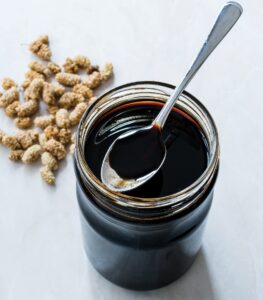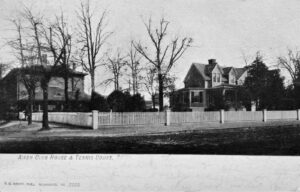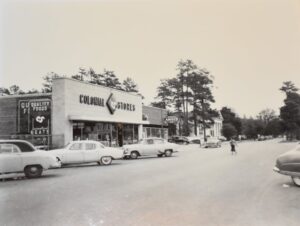Originally written by Stephen Delaney Hale for the December, 2017 Issue of Bella Magazine
Photos by Stephen Hale, post cards courtesy of Aiken County Historical Museum.
The course at Palmetto Golf Club is an almost secret gem among the experiences of American golf. Former head professional Tom Moore explained that knowledgeable golfers around the world were aware of the British-like course in the South Carolina sandhills, but, “if you don’t have a member for a friend, reading about Palmetto may be the closest you get.”
The Winter Colony Sportsmen Arrive in Aiken
Palmetto Golf Club was founded in 1892 by Thomas Hitchcock, a prominent gentleman sportsman from New York, and William C. Whitney, a fabulously wealthy Long Island industrialist, investor, landowner, and Thoroughbred trainer. To cater to the wishes of his bride, Louise Eustis Hitchcock, the newlyweds spent the winter of 1891 – 92 in Aiken following their marriage earlier that year. Louise had promised her husband that Aiken’s climate made year-round Thoroughbred training possible, and the forgiving sandy-loam soil was the best defense from ankle injuries among the youngest horses in training.
Thomas and Louise, although not the wealthiest of their contemporaries, were at the center of New York society, and they soon attracted many wealthy families from the Northeast to their circle. Before long these children of the founders of The Gilded Age and the American Industrial Revolution, numbering in the hundreds, established a “Winter Colony” from October through April in Aiken. These winter residents, led by Whitney and Hitchcock, established recreational facilities for polo, fox hunting, horseback riding, steeplechase and flat racing, Thoroughbred training, and two forms of tennis. The nights were filled with cocktail parties, bridge and poker games, and the occasional ballroom dance, complete with orchestra, in one of the more than 100 “cottages” built by the colony. They went by that moniker because, grand as the houses in Aiken were, and they indeed were, they were dwarfed by the same families’ estates in Manhattan, Long Island, Newport, the Hudson River Valley, and other wealthy enclaves in the Northeast. The majority of these local estates were constructed in the heart of Aiken in the vicinity of Palmetto Golf Club, and many of them continue to exist.
The Original Four-Hole Course Was Improved Through the Years
In 1892, recognizing the increasing interest in golf in America, Hitchcock and Whitney laid out the four holes where holes 16, 17, and 18 and the practice range are located today. Soon, Herbert Leeds, fresh from designing Myopia Hunt Club in Boston, stretched the four holes to nine. He was assisted by the club’s first head golf professional, James Mackrell, and they took its design to the full complement of 18 holes in 1895.
Research indicates that the Palmetto Golf Club is the oldest, continually operated 18-hole golf course in its original location in the Southeast and, perhaps, the second oldest continuously operated club in the United States, with the Chicago Golf Club being the oldest.
In 1901 title to the land and facilities was transferred to the Whitney Trust, which held other properties and thousands of acres west and south of town, to assure that they would be preserved for the future. The Palmetto Golf Club has leased the facilities from the Whitney Trustees since that time and recently renewed the agreement through the year 2080.
There is a record that the great golf designer Donald Ross — who is also credited with the initial routing of the holes at Aiken Golf Club — made improvements at Palmetto in 1928 that included the damming of a stream behind the 18th tee box, thereby providing a rudimentary but rare and effective irrigation system for the course.
In 1932, that other icon of American golf course design, Alister MacKenzie, immediately after completing the Augusta National Golf Club, was asked to draw up plans for converting Palmetto’s sand greens (common at the time) to grass, lengthening the course, and making other improvements. Wendell Miller of New York, who had just finished construction of Augusta National under the guidance of MacKenzie, Bobby Jones, and club chairman Clifford Roberts, was contracted to manage the project at Palmetto. Many of the original Augusta National investors were Aiken Winter Colonists and already members at Palmetto.
There were many minor changes, mostly involving tree and bunker work, throughout the 1940s, 50s, 60s, and 70s. Leading American course architect Rees Jones suggested some bunker renovations, which began in the late 1980s and were completed when the course was re-grassed in 1995. In 2003, Tom Doak, a recognized authority on Dr. MacKenzie’s work, provided recommendations to restore some of the MacKenzie design characteristics. This work was completed in 2005 and mainly involved reworking the bunkers and expanding the greens out toward the existing mounds and slopes. That work was supervised by 30-year head pro Tom Moore, who explained that a golf course is a living thing and that features move as, over the years, new sand is blasted out of sand traps and grass leaders move imperceptibly over new ground.
Only 8 Golf Pros in its History
Now golf professional emeritus, Tom Moore said that in addition to the work on the course, the pro shop was upgraded in 2007 to include the addition of a History Room and a new locker room along the rear of the ancient structure. Moore came to Palmetto from West Lake Country Club in Augusta in 1992 and is regarded with esteem by the entire golf community in the Aiken/Augusta region. Noted golf course architect Gil Hanse is now serving as resident architect for the club.
Palmetto Golf Club has had only eight golf professionals in its history. The first professional, Mackrell, faithfully served the club for 42 years. During the post-war years Bert McDougal, yet another in a long line of Scotsmen who influenced the design and operation of Palmetto, served as club professional for roughly three decades. His son Donnie, who grew up at Palmetto, went on to become club professional at Shinnecock Hills. The current professional, Brooks Blackburn, came from Midland Valley Country Club in November of 2008 and succeeded Moore as head pro at Moore’s retirement at the end of December 2012.
Palmetto Golf Club has hosted numerous prominent professional golfers throughout its storied history. The legendary British professional Harry Vardon visited the club during his initial visit to America in 1900 when he won the U.S. Open at the Chicago Golf Club. During Vardon’s visit to Palmetto, as a professional, he was denied access to the clubhouse and was not allowed to wear “plus fours” on the course. He was allowed to smoke on the course only by virtue of a special dispensation from the golf committee.
Some of the other famed professionals who have played Palmetto are Masters Champions Ben Hogan, Byron Nelson, Sam Snead and, in recent years, Ben Crenshaw. From 1945 to 1953 Palmetto held the prestigious Devereux Milburn Tournament as a pro-am the weekend before the Masters. This tournament was won by such notables as Ben Hogan, Byron Nelson, George Fazio, Henry Picard, and Lawson Little.
Many Golf Notables Have Visited
According to Palmetto’s most accomplished resident member in recent years (he lived across the street), the late Bobby Knowles said many of the best professionals were enticed to come to the area a week before The Masters. During those years many local winter residents who were also Palmetto members provided them with a generous appearance bonus to join their teams for the member/pro Devereaux Millburn Tournament, boosting the early participation among top-level pros in what grew into the most popular golf tournament in the world.
In addition to Knowles, many top amateurs played Palmetto through the years, including club member A.H. Fenn. The legendary Bobby Jones and William C. Campbell, former President of the USGA and one of only three Americans ever to be named Captain of The Royal and Ancient Golf Club of St. Andrews, also played the course in its early years.
In a 2000 interview, Knowles’ wife Barbara Rutherfurd Knowles said she remembered both Bobby Jones and Augusta National Chairman Clifford Roberts having lunch in her family home across Berrie Road from Palmetto when she was a child. Jones and Roberts assisted their famed course architect Alister MacKenzie in the transition of Palmetto’s greens from sand to grass surfaces immediately following completion of Augusta National in 1933.
Other notables who have played the Palmetto include Presidents Eisenhower and Taft, Britain’s Prince Andrew (when he was Captain of The R&A), and Sir Michael Bonallack, former Secretary and Captain of The R&A and five-time British Amateur Champion. Entertainment celebrities such as Fred Astaire, who was a member, as well as Phil Harris and Bing Crosby, were regulars at the treasure on Berrie Road, just off Whiskey Road, and just a few blocks from the center of Aiken. Republican presidential candidate Barry Goldwater attended a reception thrown by the membership during his race against President Lyndon Johnson in 1964.
Past club presidents include Eugene Grace, the former Chairman of Bethlehem Steel, and George Herbert Walker, grandfather of President George H. W. Bush, and himself a former president of the USGA and the donor of the Walker Cup.
Although older than the governing body of American golf, Palmetto was not one of the five original founding members of the United States Golf Association (USGA) when it was established on January 22, 1896. The Palmetto Golf Club’s USGA certificate is believed to be the oldest still in existence and it is on display at the club. It ranks 19th in seniority among active USGA certificates.
Stanford White Designed the Clubhouse
The current clubhouse, completed in 1902, was designed by noted New York architect Stanford White, who also designed the Shinnecock Hills clubhouse on Long Island. The Shinnecock clubhouse, with a much larger membership than Palmetto, has been expanded several times over more than a century, while Palmetto’s classic clubhouse has stood frozen in time and architectural perfection. Yet the original parts of the two clubhouses obviously resemble each other and both attest to the unmistakable hand of Stanford White. Especially in their formative years but still so today, many of the members of Shinnecock were also members of Palmetto.
The golf course is a par 71 layout and plays at 6,713 yards from the championship tees. What the course may lack in length it more than makes up for with its small elevated and undulating greens, and clever (some say diabolical) bunkers. The competitive course record of 59 was established by USC Aiken All American golfer Dane Burkhart on Sunday, August 14, 2005, in the final round of the Palmetto Amateur. Burkhart’s victory margin was eight shots and he scored a record 20 under par for the four rounds of the tournament. Others who grew up trying to master the nuances of Palmetto are now highly successful current PGA Tour members, including Scott Brown and Kevin Kisner, who has built a house along the 17th hole.
Two of the most quoted observations about Palmetto were made by golf legends Ben Hogan and Bobby Jones. Hogan often said that “holes 3, 4, and 5 were the best back-to-back-to-back par 4s” that he had ever played. According to Dick Taylor of Golf World, Hogan also said that holes 3, 5, and 13 were three of his 18 favorite holes. Bobby Jones said that “number 7 was the best medal play par 3 he ever played.”
Probably the highest compliment paid to Palmetto was made by Dr. Alister MacKenzie in the May 1933 edition of the American Golfer Magazine. MacKenzie said, “The alterations at Palmetto have been such a success that the Chairman of Bobby Jones’ executive committee at the Augusta National writes me saying, ‘We have only one serious complaint to make against you regarding the Augusta National. That layout you designed at Aiken is liked so well that the Aiken colony does not seem to be the least bit interested in coming over to the Augusta National.’”
























